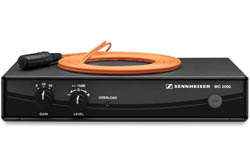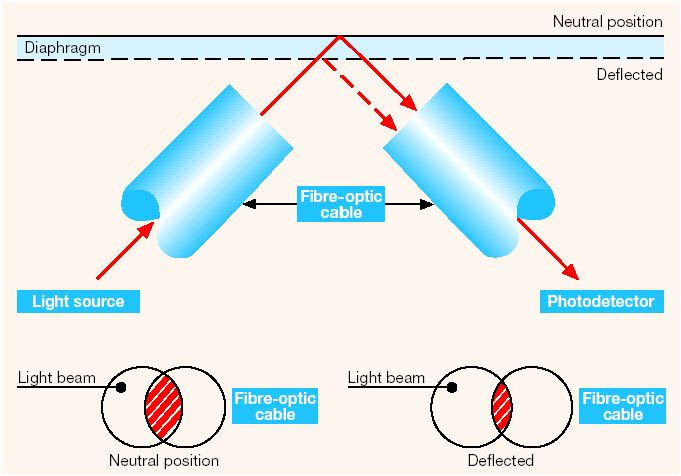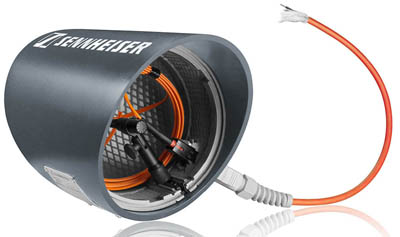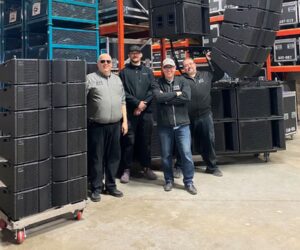The new Sennheiser MO 2000 optical microphone offers a new type of transducer that processes acoustic signals on the basis of variations in light intensity, making it well suited for applications where other microphones are only partly (or not at all) effective.
“By implementing the optical principle, both the microphone head and the electronics can be located far away from each other,” noted David McNutt, industry team manager-installed sound.
“And to insure functionality in demanding environments the microphone head is completely constructed of a plastic material that can withstand exposure to aggressive substances such as gases, salts and humidity,” he continues. “No electric current flows through the microphone head.”
“All these features make this optical microphone the perfect candidate for applications in which communication or measurements are required under the most difficult conditions.”
In the medical field, for example, the optical microphone is ideally suited for use in magnetic resonance imaging (MRI) in order to maintain contact with the patient during MRI scans or to provide active noise cancellation.
Due to its metal-free and current-free design, the microphone head does not interfere with the imaging process and is itself not influenced by the strong magnetic fields inside magnetic resonance imaging equipment.
The optical microphone also benefits from its metal-free and current-free design when used in measuring applications, because it does not influence the magnetic field. In EMI/EMC laboratories, for example, it functions like an “artificial ear” on a mobile phone without distorting the measurements.
See diagram at right: In the optical microphone, light from a light-emitting diode (LED) is directed onto a reflective diaphragm via a fiber optic cable (transmitter fiber optic cable). The diaphragm reflects part of the light into a receiver fiber optic cable.
.
If the diaphragm is moved by sound signals, the reflected light beam is deflected, with the result that more or less light is coupled into the receiver fiber optic cable. At the end of the receiver fiber optic cable, a photodiode converts the light intensity variations into electrical signals.
In addition, a special version of the optical microphone – the Sennheiser IAS MO 2000 SET – is also the first microphone in the market to be certified by EMI/EMC laboratories for use in potentially explosive atmospheres.
.
For example, the IAS MO 2000 SET can be employed for the acoustic monitoring of gas dehydration plants in natural gas production.
In this case, the microphone can “hear” slow leaks that are otherwise too small to cause a pressure loss or to trigger an alarm message in other monitoring systems.
Technical Data
Polar pattern: omni-directional
Optical fiber: multimode 200/230 μm
Frequency response: 20 Hz to 40 kHz (±6 dB)
Sensitivity: 15 mV/Pa
S/N related to 1 Pa sound pressure: > 50 dB(A)
Maximum sound pressure: 134dB
Amplification: infinitely variable in the range; +/-15 dB, switchable in steps 0 dB, +20 dB, +40 dB
AF output level: 15 mV/Pa (potentiometer in mid position, switch set to 0dB)
Output impedance: approx. 330 ohms asymmetrical, 660 ohms symmetrical
Current consumption: 120 mA
Operating temperature range – microphone: -10°C to +70°C; central unit: 0°C to 40°C
The system IAS MO 2000 SET complies with the requirements regarding intrinsically safe optical radiation according to EN 60079-0:2004 and EN 60079-28:2007. It also meets the requirements of the ATEX Directive on explosion protection, which was documented with the Type Examination Certificate TÜV 07 ATEX 553824 and TÜV 07 ATEX 553825X. This certification allows the IAS MO 2000 SET to be used in potentially explosive atmospheres of Zone 1 (e.g. gas processing plants). The IAS MO 2000 SET has the degree of protection IP 54 (5=protection against dust deposits, 4=protection against splashing water from all directions) and is therefore suitable for outdoor applications.






















